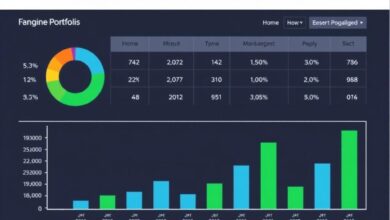What is liquidity and how it affects your investments

To enhance your capital accessibility, prioritize assets that can be swiftly converted into cash without significant loss. This flexibility is paramount for seizing opportunities or managing unforeseen expenses. Consider holding a balanced portfolio that includes easily tradable stocks and bonds, alongside more illiquid investments.
Engaging in regular assessments of your asset composition will allow you to identify areas where selling assets can yield immediate liquidity. By understanding market conditions, you can time your sales effectively, ensuring that you capitalize on favorable prices while minimizing exposure to potential downturns.
Monitor your investment strategies closely; this vigilance enables you to adapt quickly when the need arises. Developing a robust plan for asset allocation not only prepares you for unexpected events but also positions you advantageously to capitalize on new ventures as they emerge.
What is Market Liquidity?
Market liquidity defines the ease with which assets can be bought or sold without causing significant price changes. High liquidity indicates a robust cash flow, enabling quicker transactions and less impact on market prices.
- Cash Flow: A market with high liquidity allows for smoother cash flow. Investors can convert their holdings into cash more efficiently, ensuring they have the necessary funds available when opportunities arise.
- Selling Assets: In a liquid market, the process of selling assets is streamlined. Investors can enter or exit positions rapidly, minimizing potential losses and capitalizing on favorable conditions.
- Flexibility: Increased flexibility in trading strategies emerges from high liquidity. Investors can implement various approaches–such as day trading or long-term holds–without worrying about being locked into illiquid positions.
A key metric to assess market liquidity is the bid-ask spread. A narrower spread typically signifies greater liquidity, allowing investors to execute trades at more favorable prices.
- Assess Trading Volume: Higher trading volume often correlates with better liquidity. Monitoring daily traded shares can provide insights into how easily assets can be converted to cash.
- Evaluate Market Depth: Analyze order books to understand how many orders exist at different price levels. A deeper market means larger orders can be executed without drastically affecting prices.
A well-functioning liquid market protects against drastic fluctuations while providing investors with the agility needed to respond to changing circumstances swiftly.
Measuring Liquidity Risk
To evaluate liquidity risk, focus on metrics such as the bid-ask spread and trading volume. A narrower spread indicates better access to selling assets without significant price impact, while higher trading volume suggests greater flexibility in market transactions.
Calculate the turnover ratio by dividing the total trading volume by the average outstanding shares. A higher ratio reflects a more liquid asset, allowing for easier liquidation when necessary.
The depth of the market also plays a crucial role; assess how much capital is required to move prices significantly. Analyze order book data to determine the number of buy and sell orders at various price levels. Greater depth implies that large trades can occur with minimal effect on asset prices.
Another essential tool is stress testing under various scenarios. Simulate adverse conditions to see how quickly you can liquidate positions and at what cost. This analysis will help identify potential pitfalls in market downturns or unexpected events.
Finally, maintain an eye on macroeconomic indicators that influence market conditions. Interest rates, economic growth forecasts, and geopolitical factors can all affect your ability to access cash through asset sales effectively. Understanding these dynamics provides a clearer picture of potential liquidity challenges ahead.
Liquidity in Different Assets
Evaluate the cash flow characteristics of assets before purchasing. Real estate, for instance, typically requires significant time to sell and may involve substantial transaction costs, impacting immediate access to funds. Conversely, stocks generally offer quicker selling opportunities through established exchanges, providing more fluidity in cash conversion.
Consider bonds as well; their liquidity varies based on market conditions and issuer creditworthiness. Government securities often exhibit higher tradability compared to corporate bonds, which can face liquidity constraints during economic downturns.
Cryptocurrencies present a unique case. While major coins like Bitcoin have seen increased acceptance and trading volume, altcoins may struggle with sell-off pressure due to limited buyer interest. Always assess the market depth when planning to liquidate these assets.
Investment vehicles such as mutual funds provide moderate accessibility since they are traded at the end of the day; however, redemption fees can affect net returns and cash flow timing. Structured products might limit access due to lock-in periods or complex terms that hinder rapid asset liquidation.
In summary, understanding how different asset classes behave in terms of convertibility into cash is paramount. Analyze each option’s potential for quick liquidation while considering associated costs to optimize your financial strategy.
Strategies for Managing Liquidity
Maintain a cash reserve to ensure immediate access to funds during critical times. Aim for at least three to six months’ worth of expenses to mitigate unforeseen market fluctuations.
Diversify your portfolio across various asset classes, enhancing flexibility in accessing capital. Consider holding a mix of equities, bonds, and liquid alternatives that can be easily converted to cash without significant loss.
Establish clear selling criteria for assets. This involves setting predetermined thresholds or triggers for divesting underperforming investments, enabling swift decisions when necessary.
Utilize short-term investment vehicles such as money market funds or Treasury bills. These options provide quick access while maintaining some yield, balancing safety with potential returns.
Regularly review and adjust your asset allocation based on market conditions. Staying informed on economic indicators will guide you in making proactive adjustments that align with liquidity needs.
Implement automated trading strategies that allow for quick execution of buy or sell orders. This technology enhances reaction time during volatile periods, ensuring you capitalize on market opportunities efficiently.
Engage with financial advisors who specialize in liquidity management. Their expertise can provide valuable insights and tailored strategies suited to your unique circumstances and goals.
Monitor your investments’ performance continuously. Use analytical tools to assess which assets may require rebalancing or liquidation based on changing market dynamics.







